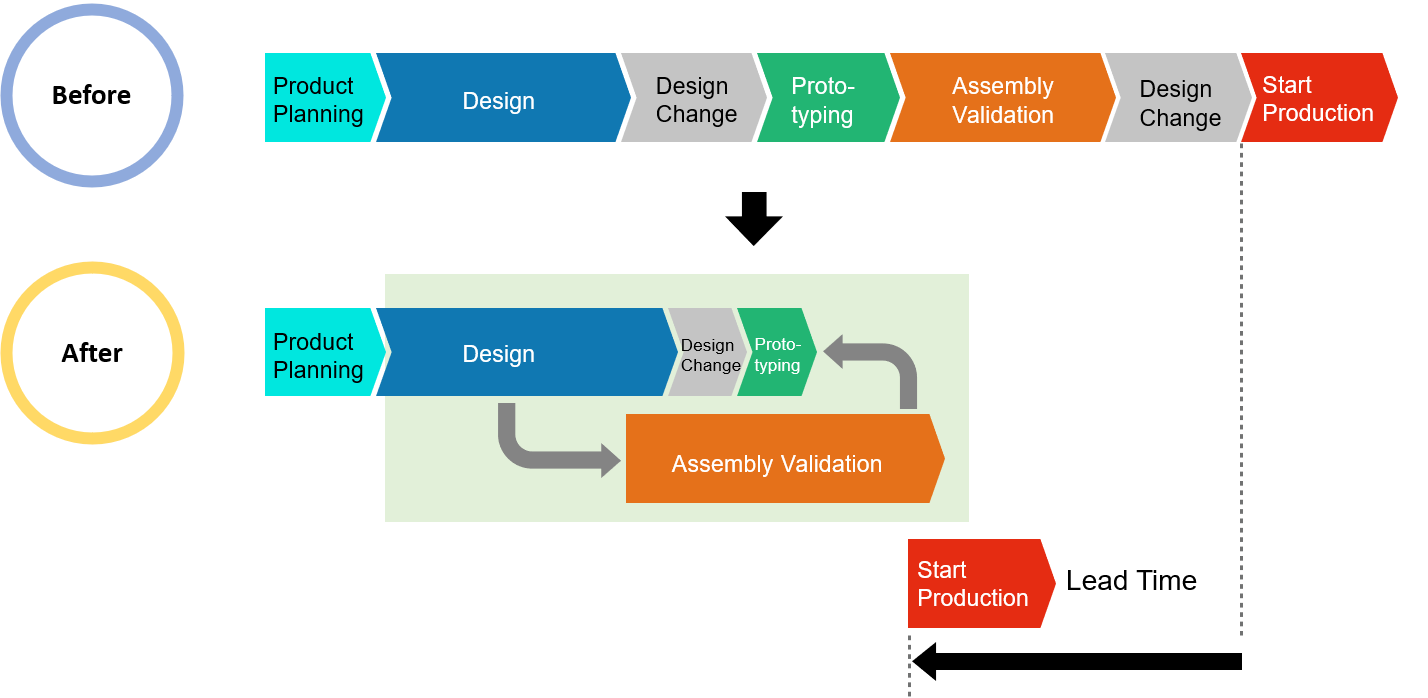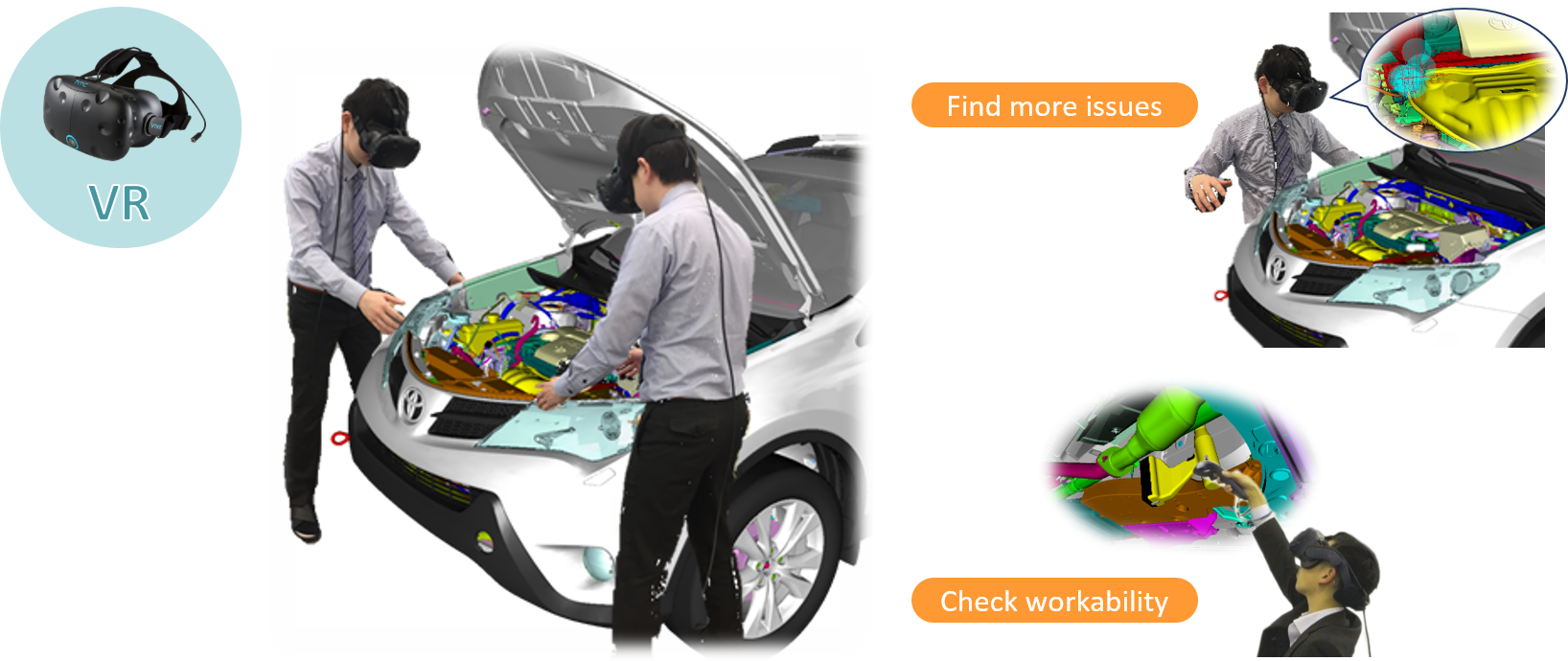Manufacturing Engineers. Optimize Your Assembly Processes. Virtual Assembly Planning & Simulation
Optimize Your Assembly Processes.
Virtual Assembly Planning & Simulation
What If?
During manufacturing planning, you could:
- Combine all of the 3D CAD files from the design department into a single Virtual Product Model - even combining multiple formats
- Use this Virtual Product Model as the basis for all of your planning because it is CAD-level accurate
- From the Virtual Product Model, create any number of BOMS from the same data
- Drag and drop, part by part, virtually building the product
- While building, check for part travel clearance, tool access, and even human access
- Then virtually simulate the entire assembly process, looking for potential problems and optimizing
Would that be of benefit to your company? If so, we can help.
Common Challenges
- Assembly planning and validation often starts after the design is complete, delaying the discovery of assembly issues
- Assembly validation often requires physical prototypes that are slow and expensive to produce
- Digital assembly validation solutions often cannot handle large models due to hardware and software limitations
- Design changes usually require slow and costly revalidation of previous results
XVL Will Speed up Your Planning and Give you Better Results

Assembly Process Validation Overview
The traditional process for validating assembly starts with the release of the design. Physical prototypes are often used to develop and check the assembly processes. If an issue is discovered during this process, it may require updates to the assembly process or even the product design. The longer it takes to identify an issue, the more expensive it becomes to fix it. Issues discovered after production has started are the most costly, as they not only halt production but also require updates to the design and production process, as well as potentially scrapping existing production.
Lattice Technology's assembly process validation solution offers a way to avoid these problems. It begins by converting your heavy 3D CAD data into lightweight XVL. With this, you can easily define the assembly processes using Lattice Technology tools. The data is so lightweight that you can visualize and validate the entire assembly process on the full 3D model. This allows for digital assembly validation in XVL, eliminating the need to wait for design completion or rely on prototypes.
No More Physical Prototypes
Reduce or eliminate the need for physical prototypes by using Lattice Technology. With this software, you can validate the entire assembly process using only design data, eliminating the need for physical prototypes. By finding and fixing assembly issues before the design is complete, you ensure that the assembly process is already validated when the design is released. While you can still check the assembly process with physical prototypes, you will need far fewer prototypes than before. In fact, eventually, you may not need physical prototypes at all.
Virtual Validation of the Assembly Plan
Validate the complete assembly process using the entire 3D model with Lattice Technology. Our software can handle large 3D models, and products with 100s or 1,000s of parts, allowing you to validate the entire 3D model without splitting it into subassemblies. This makes the validation process more efficient, as you only need to perform one validation check instead of multiple independent checks. Additionally, by validating against all parts at once, you eliminate the possibility of missing any issues that were left out of the initial check.
Detailed Validation
In addition to validating the assembly process, Lattice Technology offers solutions to evaluate other aspects of the processes as well. This includes using human mannequins to ensure safety and workability and incorporating tools and fixtures to assess the feasibility of the operations. These features, along with many others, are available in the Lattice Technology solutions.

Visualize in Virtual Reality (VR), Augmented Reality (AR), and Mixed Reality (MR)
With Lattice Technology, you can now visualize your processes in virtual reality. By utilizing full-scale 3D models in VR, you gain a unique perspective that allows you to identify issues that may not be immediately evident through traditional digital verification. This puts you in control and enhances the accuracy of your verification process.

Learn More
We have several customers who use XVL for this function. Mitsubishi is one; click here to read their story.
How can we help? Click below to send us a question about a problem you would like to solve.

